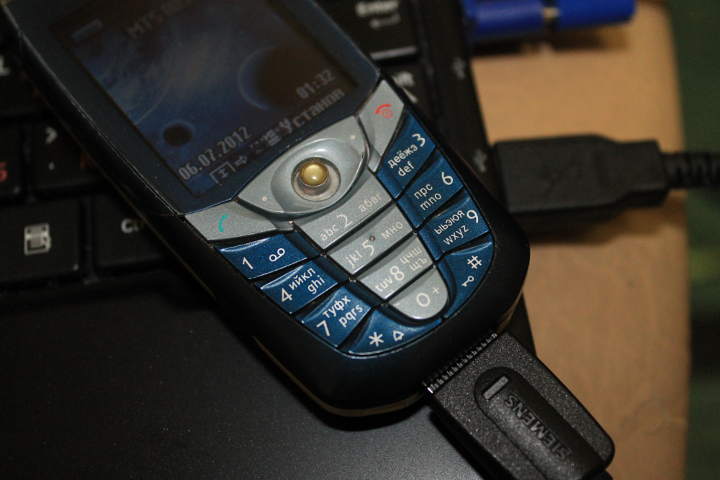Transferring Files from a Siemens Phone to Linux - SieFS

Foreword
About a week ago I lost my second phone, which I used exclusively for calls. Along with him, of course, and sim card. Only today it was restored, and of the extra phones there was only the old dusty Siemens CX70. At first, it was not turned on, but the cleaning of contacts and charging for the night revived it. And then the question arose - how to connect this miracle of 2005 release? It does not have Wifi, no bluetooth, only IrDa and a plug for connecting the cord. A lot of time passed and the adapter for infrared port could not be found, but a cord was found to connect Siemens devices. And then I remembered the problems with the installation - the driver for the device, the software, then the inconvenience during the transfer. Now I have ArchLinux and Windows 8, on which these drivers would hardly have been installed. Fortunately, I discovered the SieFS package.
Installation and use
The latest version of SieFS was released in 2005. And judging by the system requirements on the author's website, you need the kernel version 2.4. *, Mount 2.11 or higher, and FUSE 2 or higher. Despite the required core, everything is going with some adjustments. By the way, I sheltered the siefs package on aur and fixed the error to work on new systems, so ArchLinux users will only need one command:
yaourt -S siefs Next, use the -t siefs option for mounting. The device is usually / dev / ttyUSB0. Accurately can be determined by the conclusion dmesg | tail something like this
usb 3-1: pl2303 converter now attached to ttyUSB0
Example of mount:
sudo mount -t siefs /dev/ttyUSB0 /mnt For other distros you will have to complete more steps. Installing libfuse-dev, build-essential depends on the distribution. Download source, unzip, configure with changes, build and install.
wget http://chaos.allsiemens.com/download/siefs-0.5.tar.gz tar -xvf siefs-0.5.tar.gz cd siefs-0.5/ LDFLAGS="-ldl -lrt" ./configure make Further make install, but I advise users of deb-distributions to checkinstall (I advise others to find an analog) to create a package and a separate installation / Also not sure if the patch used in pkgbuild for archlinux is needed. Just in case rghost.ru/39061415 ( mirror on Yandex disk ) - patch. Put so - patch -p1 -i ../siefs.patch after cd siefs-0.5 / and before configure. (check on systems to fix the post.)
')
Conclusion
As a bonus, you can convert recordings from a voice recorder to WAV format.
vmo2wav [-o output_file.wav] input_file.vmo Also for those who find IrDa you need to install irda-tools or irda-utils, see what package you have.
Next, create a device:
mknod /dev/ircomm0 c 161 0 mknod /dev/ircomm1 c 161 1 mknod /dev/irlpt0 c 161 17 mknod /dev/irlpt1 c 161 17 We connect the adapter, turn on IrDa on the phone and execute:
irattach irda0 -s mount -t siefs /dev/ircomm0 /mnt If something does not work, there is irdadump and irdaping for troubleshooting.
I also give the package I collected for ArchLinux i686 and mirror .
Do not forget and do not throw out your old devices, they may still be useful to you. For example, I found on my Siemens the old sources of my programs and photos, even if they are not very good quality. Additionally I discovered that his battery holds a charge for a very long time - I got used to that all new devices do not live for more than one day, but here a pleasant surprise from the past.
Source: https://habr.com/ru/post/147230/
All Articles